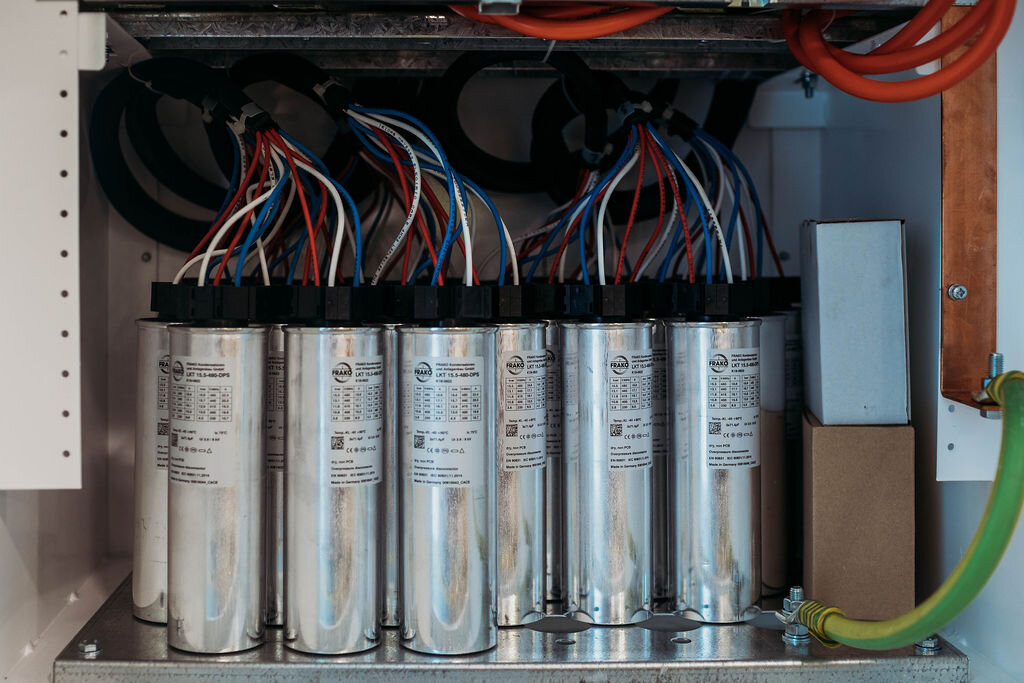In this era of green architecture, power factor correction is one of the most underutilised sustainability tools. But what does this mean for the future?
Inductive loads such as electric motors, ballast lighting and transformers require higher reactive power. This results in increased energy consumption and potentially additional costs.
Reduced Electricity Consumption
The power factor is the ratio of true power to apparent power, which is used to measure the efficiency of a circuit. It is a vital indicator of a circuit’s overall energy efficiency, and a reduction in power factor can improve system performance and lower utility charges. Low power factors can result from using inductive loads such as motors and machinery. Capacitors are typically used to correct these conditions by cancelling out the inductive load reactance.
In addition to reducing energy consumption and demand fees, a power factor correction unit can also reduce carbon emissions. It is an important issue considering the large amount of CO2 produced worldwide.
As with any investment in power efficiency and sustainability, it is crucial to consult an experienced electrical engineer who can conduct a thorough inspection of the existing wiring and equipment before deciding whether to install correction equipment. It can often prove costly as most installations require a custom solution rather than a generic off-the-shelf product.
Click here – Why Do Business Need E-commerce Boxes
Reduced Carbon Dioxide Emissions
Power factor correction is a cost-effective way to reduce the amount of energy waste and overall consumption. It also helps businesses reduce their carbon footprint.
A high power factor can lower electricity bills by up to 20 per cent and reduce the amount of energy waste and carbon emissions that go into the atmosphere. It can also help eliminate utility reactive power fees, adding up to thousands of dollars a year.
There are many ways to improve your power factor, but one of the most effective is installing Power Factor Correction Units. These units contain capacitors that can be switched on and off to correct the power factor in your electrical system.
When your power factor is low, you are not entirely using the energy the power company supplies. It can result in penalties on your electricity bill and overloading your electrical distribution system.
In addition, poor power factors can increase the amount of heat and transmission loss on your equipment and systems. These losses can have a significant impact on your carbon footprint.
Increased Product Lifespan
Power Factor Correction Units can be an effective means of reducing electricity costs, as well as improving energy efficiency and sustainability. It is because they improve a site’s power factor (PF), which in turn helps to reduce demand charges.
The PF of a site’s equipment is determined by the ratio of its total electrical load to the overall voltage it receives. If the PF of a site’s equipment remains below a set level, it can result in a higher kVA demand charge and an increased energy bill for that site.
Therefore, businesses interested in reducing their kVA demand charges should consider installing power factor correction units. In addition, PF correction units can help increase the lifespan of electrical equipment and machinery by reducing the amount of non-useful or reactive power they receive.
Many factors can impact the lifespan of a product. These include material properties, user behaviour and broader social and cultural trends.
The main barrier that can impact the lifespan of a product is the quality of the materials used in the manufacture of the device. In particular, materials prone to deterioration, such as copper, aluminium and steel, can significantly shorten the lifespan of a product. These materials can easily break down and lose their ability to perform their intended function.
Click here – What are some of the Common Plumbing Issues and How to Fix Them
Reduced Maintenance Costs
In pursuing energy efficiency and sustainability, many facility managers are considering alternative energy solutions such as solar and wind. While these technologies offer significant benefits, they often come with considerable upfront costs that may make them impractical for some businesses.
On the other hand, power factor correction offers a more cost-effective and practical solution that is on par with many renewable options. It makes existing utility electricity more efficient, delivers 10% or more energy reductions, and significantly reduces carbon emissions.
One significant benefit of power factor correction is the fact that it can save business owners a substantial amount of money on their electricity bills. The savings are primarily because the waste reactive power component of electrical consumption is reduced when it is corrected, and energy suppliers charge for this type of waste.
Another essential benefit of power factor correction is that it can help to reduce maintenance costs. It also helps improve the equipment’s lifespan and decreases the risk of electrical failures.
In addition, faulty capacitors can increase energy costs and create safety risks. Because of this, it is important to monitor the performance of capacitors regularly to ensure that they are functioning properly and performing at their best.
The most effective way to measure the impact of a power factor correction system is by collecting data on power usage and comparing it with previous readings. It allows users to see how much they are saving and determine whether or not a power factor correction system is worth the investment. This data can be collected through various methods, including remote monitoring and analysis software.

